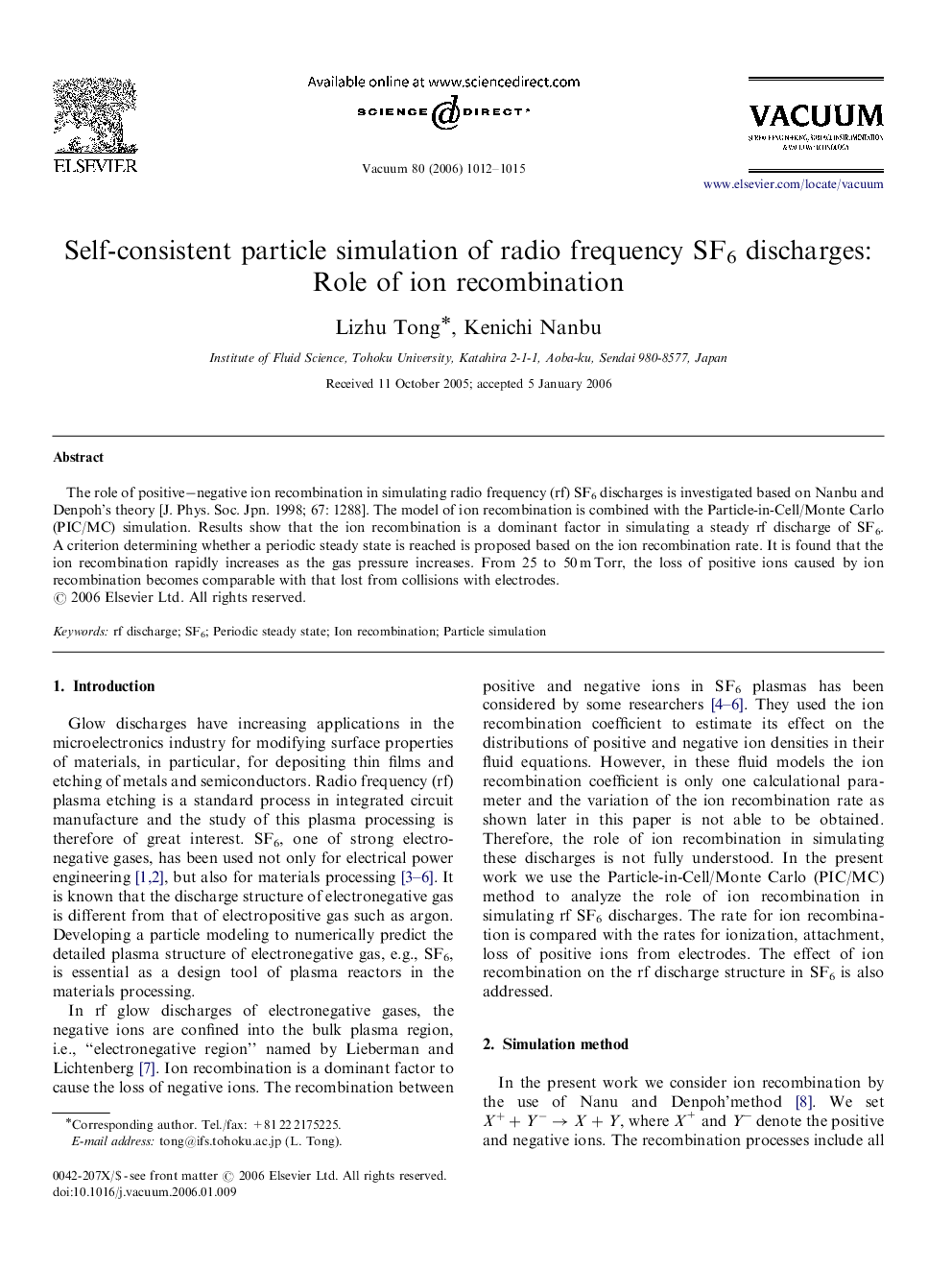| Article ID | Journal | Published Year | Pages | File Type |
|---|---|---|---|---|
| 1690794 | Vacuum | 2006 | 4 Pages |
Abstract
The role of positive−negative ion recombination in simulating radio frequency (rf) SF6 discharges is investigated based on Nanbu and Denpoh's theory [J. Phys. Soc. Jpn. 1998; 67: 1288]. The model of ion recombination is combined with the Particle-in-Cell/Monte Carlo (PIC/MC) simulation. Results show that the ion recombination is a dominant factor in simulating a steady rf discharge of SF6. A criterion determining whether a periodic steady state is reached is proposed based on the ion recombination rate. It is found that the ion recombination rapidly increases as the gas pressure increases. From 25 to 50 m Torr, the loss of positive ions caused by ion recombination becomes comparable with that lost from collisions with electrodes.
Related Topics
Physical Sciences and Engineering
Materials Science
Surfaces, Coatings and Films
Authors
Lizhu Tong, Kenichi Nanbu,
